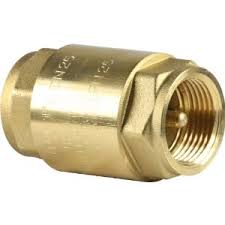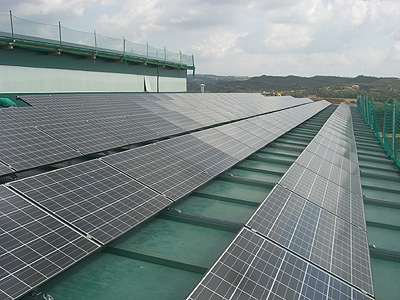The correct design of a solar thermal system involves foreseeing all the circumstances that may damage it and applying strategies that can prevent breakdowns that shorten its useful life.
There are basically 5 aspects to keep in mind:
I-Frost protection:
Protection method will depend on the heat transfer fluid used and specific weather conditions of system site.
It is not enough to protect only the collectors. Outer pipes must also be protected.
As anti-frost protection systems, following could be used:
1. Antifreeze mixtures: it is the most used solution to system protection from freezing danger.
2. Water circuits recirculation: this system is suitable for climatic zones in which periods of low temperature are of short duration.
3. Automatic drainage with fluid recovery: this system requires the use of a heat exchanger between collectors and accumulator to maintain hot water supply pressure in it. This solution is not recommended in case collector absorber is made of aluminum.
4. Outdoor drainage (only for prefabricated solar systems): this system is not allowed in custom solar systems.
5. Total system shutdown during winter: this solution is advisable for systems that are only used in summer and it should be taken into account that empty circuits are subject to greater corrosion risks.
6. Collectors heating by an electrical resistance.
7. Collectors capable of withstanding freezing: there are collectors on the market that have sufficient elasticity to withstand volume increase due to freezing.
8. Introduction in absorber circuit of elastic and watertight capsules containing air or nitrogen. By increasing pressure due to freezing, they are compressed avoiding failure due to breakage.

II-Overheating protection:
An excess of heat in solar thermal systems occurs when there is too much solar uptake in relation to energy obtained consumption. When this happens, collectors retain the heat that has not been evacuated and raise its temperature to levels that can be dangerous for system.
It is estimated that a heat transfer fluid e temperature xceeding 90 ºC becomes dangerous for the system.
Problem arises when, for reasons already mentioned, temperature rises too high in collectors and the heat transfer fluid circulating inside primary circuit begins to boil, expand and emit steam.
Both dilation and vaporization raise the pressure inside the primary circuit.
On the other hand, when heat transfer fluid begins to boil in the primary circuit, scale builds up on surfaces of the various components that deteriorate equipment.
In collectors overheating, 3 cases can occur:
1. Closed circuit with outdoor expansion vessel: steam produced goes outside. This can cause scale and risk of emptying part of circuit, forcing it to be filled before it is put into service.
2. Open circuit (consumption water passes through collectors): if boiling pressure exceeds network pressure, the produced steam will discharge into network contaminating the water.
3. Closed circuit and closed expansion vessel: when temperature rises, pressure rises and safety valve will open when it reaches a certain predetermined value.
Overheating risk in storage is lower and it can be said that it could only occur if system has high performance collectors (eg, vacuum tube collectors) and lacks a dissipation mechanism.
When water is hard (content of calcium salts between 100 and 200 mg / l), necessary precautions shall be taken so that working temperature of any point of consumption circuit does not exceed 60 ° C, without prejudice to necessary requirements against legionella application.
In any case, necessary means will be available to facilitate circuits cleaning.
In addition to safety elements there are other mechanisms to avoid overheating dangers:
• Use an organic fluid with a high boiling point.
• Angle of inclination of collectors higher than optimal to capture solar radiation preferably in winter. This ensures that the most perpendicular rays of summer fall with greater inclination on collector and take less advantage.
• Excess heat poured into the pool.
• Eaves. Through arrangement of strategically placed eaves it is possible to reduce the solar radiation that solar collectors support in summer.
• Cover collectors with covers.
• Heat sinks. These devices circulate superheated liquid through ducts to dissipate its heat in the air.
Some direct all the superheated flow of primary circuit to a unit where heat is dissipated with the help of fans (air heaters).
Others, however, are structures that are placed in each collector or battery of collectors and that dissipate only heat generated by the unit they are on. This type of heatsink works by gravity, without electronic components and is activated by means of thermostatic valves. It has the advantage that it continues to work in the event of a power cut.

III-Pressure resistance:
In case of closed systems, maximum working pressure of all components shall be taken into account. The component that has the lowest maximum working pressure is the one that will set the pattern for entire system.
In case of open consumption systems with network connection, maximum pressure of the same shall be taken into account to verify that all components of the consumption circuit support said pressure.

IV-Reverse flow prevention:
System installation must ensure that no relevant energy losses due to unintentional inverse flows occur in any hydraulic circuit of the system.
The natural circulation that produces the reverse flow can be favored when the accumulator is below the collector, so it will be necessary to take, in those cases, the appropriate precautions to avoid it.
In systems with forced circulation, it is advisable to use a non-return valve to avoid reverse flows.

V-Legionellosis prevention:
It must be ensured that water temperature in hot water distribution circuit is not lower than 50 ° C at the furthest point and before the necessary mixture for protection against burns or in the return pipe to accumulator. System will allow water to reach a temperature of 70 ° C. Consequently, the presence of galvanized steel components is not admitted.

This content was extracted from the Solar Thermal Energy Technical-Commercial Manual and is part of Solar e-learning.
All you need is Sun. All you need is Sopelia.























